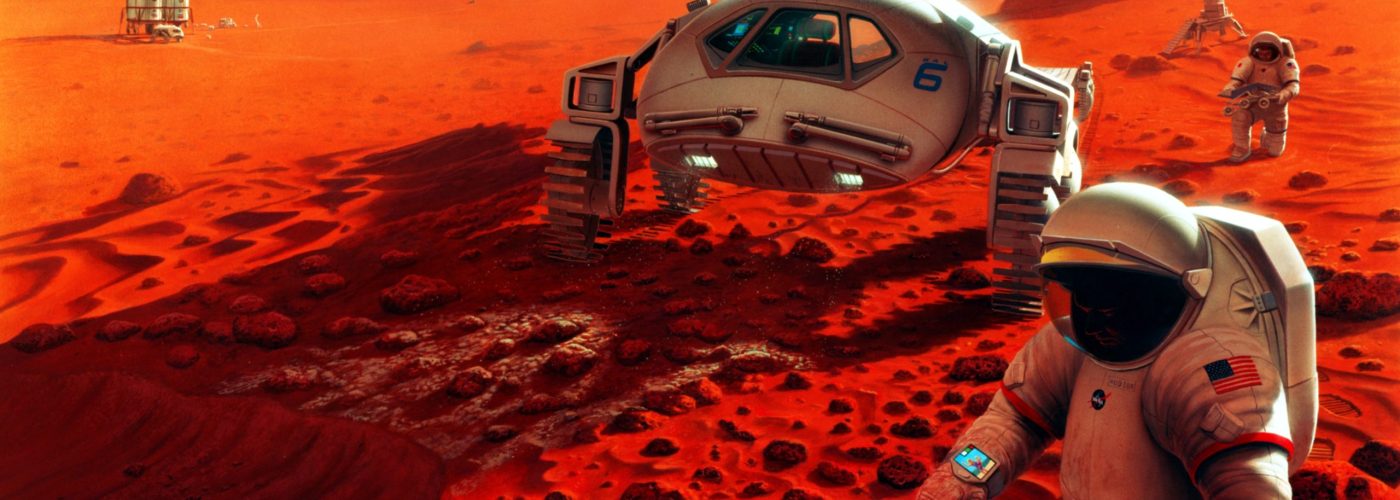Life on the red planet might sound like a script for a sci-fi fantasy film, but it is becoming nearer a reality. Homes of the future however, mean a very different home to the ones we are quite well acquainted with, on the blue planet.
With technological advancements taking place every other day, coupled with more and more discussions around visiting planets (predominantly Mars), a home investigators expert in the UK has teamed with Professor Lewis Dartnell, Science Communication-University of Westminster, to determine what a home on Mars could actually look like.
In a bid to envisage what the everyday house on Mars might really look like, Professor Lewis Dartnell has more of an idea than most. It comes as no surprise that conditions on Mars would be remarkably different to the ones we know now and going to the local shop would take a whole lot more preparation than remembering to take a carrier bag.
That isn’t to say Mars doesn’t have some features that are similar to Earth, although around half the size, Mars experiences seasons similar to that we are already accustomed too. Distinct weather patterns that can include dust storms, frost and fog all occur, although seasons do last around twice the amount of time than here on Earth.
In terms of surface, it doesn’t appear that Mars’s surface is too dissimilar to ours either, boosting highland rocky valleys in some areas and smooth plains in others. The real challenge undoubtedly for Earthlings rocketing off the red zone, is sure to be the chilling temperatures.
Mars can reach a reasonable 20°C on the equator in the peak of summer, with London’s hottest month (July) temperatures averaging 19°C the change doesn’t at first sound anywhere near dramatic. However the rest of the year can be punishingly cold with winter temperatures reaching a terrifying -195°C, even on summer nights temperatures can plummet to below 100°C, so you might need more than a winter coat for the adventure.
If we consider what we already know about Mars, and our own basic needs of survival, we can take a rather good guess at what homes on the red planet would need to include in order for us to habitat their successfully.
For starters, due to the thinner atmosphere on Mars that is comprised primarily of Carbon Dioxide, houses would need airlock doors, much like those on an aeroplane. Entrances would need to consist of two seal-able doors separated by a short corridor to create a secure airlock. Your home would also need to be equipped with a machinery style room that could contain the necessary equipment to generate oxygen and recycle water.
Your bedroom might not be the one you envisioned from a brand new home, as pressurised structures would need to exist meaning your space might be limited. Strategic design would have to be included to ensure you could keep your essentials in one place, but bathrooms won’t appear that different at all. More effort in terms of recycling however is key, so urine filtration systems would occur, sending purified waste back through water supplies. Your cupboard space might look a bit different too, with conditions outside being so unusually harsh, you can leave your raincoat on Earth, your space suit is your new best friend.
Arguably the most difficult concept about adapting to a home in Mars would be the lack of amenities and ability to socialise. With no local pubs, takeaways, cinemas, face-time or spending time lounging around with house mates, a move to Mars takes some serious thought.
There is a 20 minute transmission delay from Earth to Mars so TV broadcasts aren’t a possibility, you can however download, slowly, box sets and films onto a server.
Spokesperson for Hillarys.co.uk, Tara Hall, commented: “Whilst Mars is next on our list of planets to explore, we know that the conditions are harsh and you wouldn’t be able to just pop down to the shops or down the road to see your friends. Any outing would require rigorous preparation and would take time – we’d soon be feeling very homesick for our beautiful planet Earth!”
All homes are on Mars are to be 100% self-sufficient, so your food will be grown in your very own inflatable green house, luckily Mars soil provides a lot of the vital nutrients we need to successfully grow crops and sustain ourselves. This would however be a strictly vegan diet, which is bad news for the avid meat lover.
Martian homes build for humans also have to contain a gym, on Earth we are constantly working against gravity which means our bodies have adapted to a daily workout whether we know it or not. Gravity on Mars is a mere third of what it is on Earth which means health issues could be in the plenty if we don’t maintain muscle mass.
Windows might also be a bit of a tricky one. Exposure to sunlight is essential for our mental health and well-being, but with the radiation levels of Mars being damagingly high, picnics could prove to be a problem. Windows are the way to solve this but they need to be limited to avoid any radiation damage, so small skylights are the only option.
Finally, there are of course solar panels. These would be very similar to those on Earth, providing energy to keep Mars homes happy, they would however need regular maintenance after dust storms, which could prove difficult in a space suit.
Lewis Dartnell regarded: “Humanity will venture out through the solar system probably sooner rather than later, and Mars is the most enticing location to move house. But although living on Mars may sound exciting, would you want to spend most of your days indoors and not be able to phone your friends and family back on Earth?”





